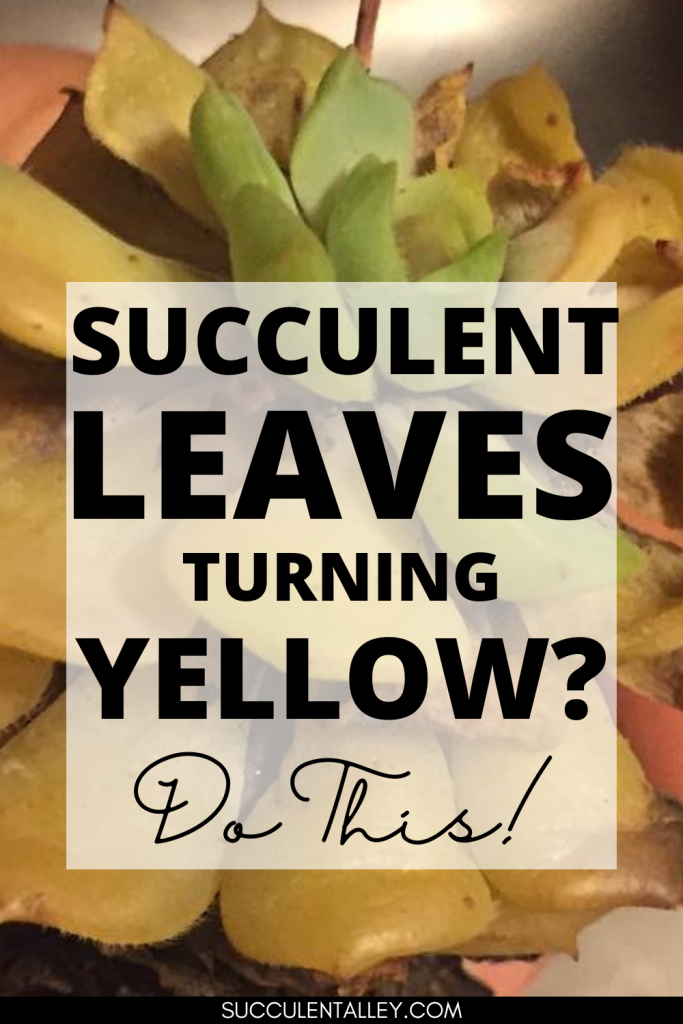Yellowing, Softening Succulent Leaves? Here’s What You Need to Know
Those yellow, mushy succulent leaves staring back at you can be alarming. But don’t panic – this common issue is often easily fixable. In this guide, we’ll diagnose the root causes behind your succulents’ unhappy leaves and provide simple remedies to revive their vibrant, plump appearance. Get ready to become a succulent hero!

Contents
Succulent Leaves Turning Yellow and Soft
Most succulent plants are naturally green, but some varieties have mottled leaves and occasionally other colors mixed with green.
Very few varieties of succulents have yellow leaves or tones when they are perfectly healthy, although there are.
If you notice that some leaves of your succulents start to turn yellow, it’s time to step in and quickly fix the problem to avoid major damage to the plant.
Why do Succulent Leaves Turn Yellow?
Overwatering is the most common cause of succulents turning yellow.
If the soil is constantly moist it can rot the plant’s roots, which interferes with its ability to absorb water and nutrients from the soil. This interrupts photosynthesis, or energy production, on the leaves of the plant and other aerial parts of the plant, and its green color fades and turns yellow.
If left untreated promptly, excessively wet conditions can cause the leaves to fall off or the tops of a succulent plant to soften and rot, eventually killing the plant.
Check the soil of your plant with the tip of your finger and, if it feels moist and you didn’t just water, over-watering is likely the cause of your succulent leaves yellowing.

Possible Solution: Don’t Water for a While
Suppose a succulent has only a few yellow leaves. In that case, the problem can be corrected relatively easily if you stop watering the plant for a while, waiting until the soil dries, and then water only when the top 3-5 centimeters are dry.
When a plant begins to drop leaves, it may be necessary to change its soil, transplanting the plant into a new pot with dry soil, and gently shaking the old, moist soil of the roots.
Replant your plant in a commercial blend designed for cacti and succulents, or make your own blend with 2 parts potting soil, 1 part perlite or vermiculite, and 1 part small gravel or coarse sand.

Put the pot back in a container with a large drainage hole and use an unglazed ceramic pot, which allows the soil to dry quickly.
Let the plant adjust to its new soil and pot for a few days before watering it again. When watering the replanted plant, make sure that the dish where the pot is placed does not get waterlogged.
Check Out Other Possible Causes
If your plant’s soil is a well-draining mix formulated for succulents and overwatering isn’t the cause, the problem could be lighting conditions.
Most succulents can withstand a lot of light, but some green succulents can turn yellow, or become lighter when exposed to too much light. Moving the plant to a location that receives bright but indirect light should correct this problem.
A pest-infested succulent can also develop yellow leaves, a sign of general discomfort. For example, mealybugs, which form a cotton cover on leaves, or spider mites, small insects that can cause yellow spots as they feed, could cause the problem. Spraying a plant with ready-to-use insecticidal soap kills these pests.

